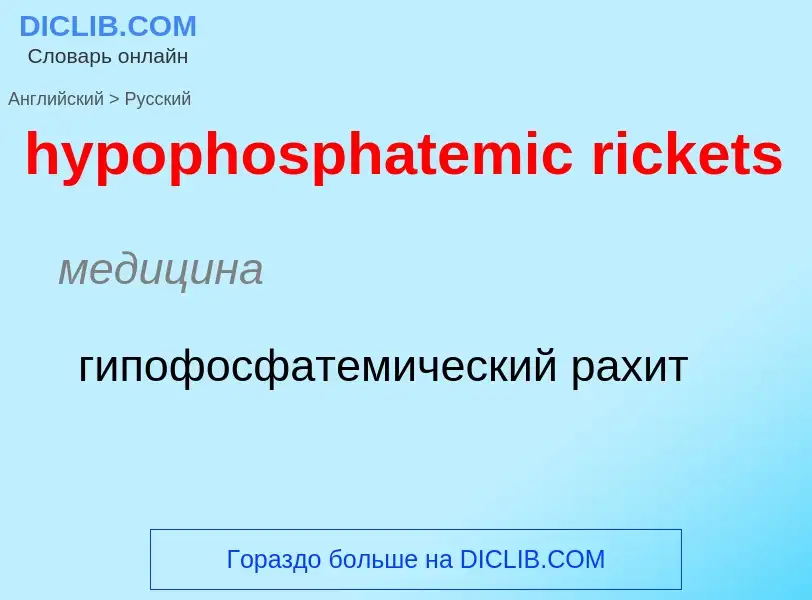Traducción y análisis de palabras por inteligencia artificial ChatGPT
En esta página puede obtener un análisis detallado de una palabra o frase, producido utilizando la mejor tecnología de inteligencia artificial hasta la fecha:
- cómo se usa la palabra
- frecuencia de uso
- se utiliza con más frecuencia en el habla oral o escrita
- opciones de traducción
- ejemplos de uso (varias frases con traducción)
- etimología
hypophosphatemic rickets - traducción al ruso
медицина
гипофосфатемический рахит
общая лексика
антирахитический
медицина
противорахитный
['rikits]
медицина
английская болезнь
юношеская остеомаляция
рахит
существительное
медицина
рахит
Definición
Wikipedia

Rickets is a condition that results in weak or soft bones in children, and is caused by either dietary deficiency or genetic causes. Symptoms include bowed legs, stunted growth, bone pain, large forehead, and trouble sleeping. Complications may include bone deformities, bone pseudofractures and fractures, muscle spasms, or an abnormally curved spine.
The most common cause of rickets is a vitamin D deficiency, although hereditary genetic forms also exist. This can result from eating a diet without enough vitamin D, dark skin, too little sun exposure, exclusive breastfeeding without vitamin D supplementation, celiac disease, and certain genetic conditions. Other factors may include not enough calcium or phosphorus. The underlying mechanism involves insufficient calcification of the growth plate. Diagnosis is generally based on blood tests finding a low calcium, low phosphorus, and a high alkaline phosphatase together with X-rays.
Prevention for exclusively breastfed babies is vitamin D supplements. Otherwise, treatment depends on the underlying cause. If due to a lack of vitamin D, treatment is usually with vitamin D and calcium. This generally results in improvements within a few weeks. Bone deformities may also improve over time. Occasionally surgery may be performed to correct bone deformities. Genetic forms of the disease typically require specialized treatment.
Rickets occurs relatively commonly in the Middle East, Africa, and Asia. It is generally uncommon in the United States and Europe, except among certain minority groups. It begins in childhood, typically between the ages of 3 and 18 months old. Rates of disease are equal in males and females. Cases of what is believed to have been rickets have been described since the 1st century, and the condition was widespread in the Roman Empire. The disease was common into the 20th century. Early treatments included the use of cod liver oil.






